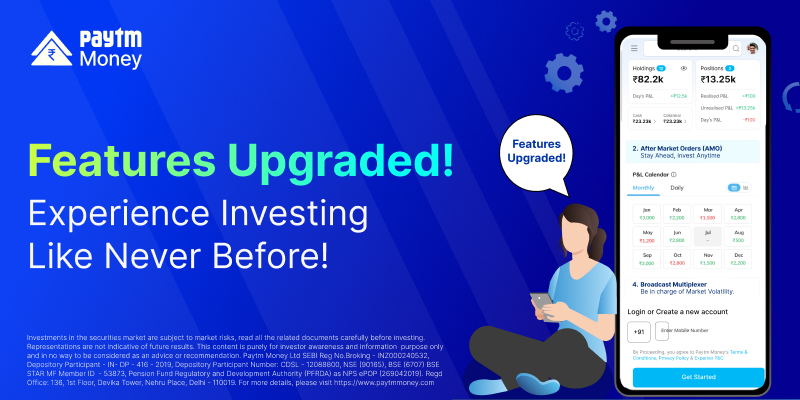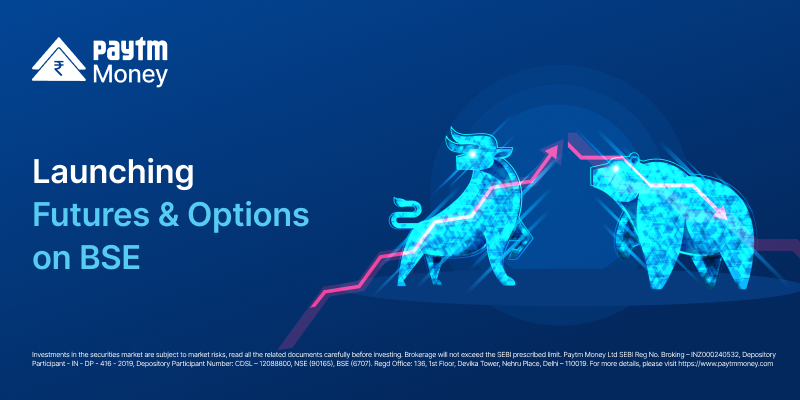The Magical Use of Stop – Loss Orders in F&O Trading4 min read
A stop-loss is exactly what it sounds like – it stops a trader from incurring a loss or more loss. It is one of the most important tools a trader should know.
How Does A Stop-loss Work?
A stop-loss order automatically closes a losing position once the price hits the pre-specified level. The challenge lies in the right place to set a stop loss. It is basically a matter of picking a price level beyond which a trade bias is no longer valid.
Why are Stop-Loss Orders Important?
Stop-loss orders never sleep, they always follow the market and will close the trade almost guaranteed at the pre-specified price, preventing heavy losses on a losing position. Stop-losses prevent large and uncontrollable losses in very volatile trades.
Stop-losses also help in risk management. Depending on their stop-loss, traders are calculating what position size to take, how much money to risk on a single trade, how much they’re risking on any single rupee they’re making, and so on.
Types of Stop Loss Orders
Chart Stop
Charts are based on important technical levels on the chart, such as support and resistance zones, trendlines, Fibonacci, Elliott Wave levels, and chart patterns, to name a few.
A trader who is looking to go long (short) would place a chart stop just below(above) an important technical level. The idea behind this approach is that important levels in a chart hold an increased number of buy(sell) orders as market participants who’ve missed the initial move would want to enter(exit) the market at a more favourable price.
Volatility Stop
These are based on the volatility of the financial instrument one is looking to trade. Volatility stops look at the volatility of a financial instrument to base the stop-loss level on. Two popular methods are as follows:
Bollinger Bands – Bollinger Bands are a technical indicator that measures how volatile a market is. It consists of three lines – the middle line is a moving average, and the two additional lines are plotted two standard deviations above and below the moving average.
- Average True Range: The ATR measures the average range of a financial instrument’s price over a given period of time. Traders can use the ATR reading to set their stop-loss outside the average range, making sure that they don’t get stopped out by simple market noise.
- Percentage Stop: These are based on a percentage of one’s trading account to limit the total risk of a trade. For example, a trader with a Rs. 10,000 who wants to risk 3% of his trading account on a single trade could place a stop-loss at a level that ensures his total potential loss is Rs. 300.
Trailing Stops
Trailing stops automatically move the underlying stop-loss level with each tick of the price that goes in the trader’s favour. However, if the price reverses and starts to go against the trader, a trailing stop will stay at its most recent level, limiting their losses or locking in unrealised profits.
Let’s Look At Examples of Stop Losses
Stop-loss Market Order
In the case of a SL-Market order, if one buys a stock at Rs. 200 and places a stop-loss order at Rs. 195, the stop-loss order will execute when the price reaches Rs. 195, thereby preventing further loss. If the price never dips down to195, then the stop-loss order won’t execute.
Stop-loss Limit Order
In the case of SL-Limit order, when the price of an asset reaches the stop-loss price, a limit order is automatically sent by the broker to close the position at the stop loss price or a better price. Unlike the stop loss market order, which will close the trade at any price, the stop loss limit order will close it only at the stop loss price or better. In the case above, if SL – Limit order is placed at 195, and the market went down further to 194.5, then the order would not be placed. As the market will keep going down further, the loss keeps growing.
While buying, SL orders should be placed at swing low. A swing low occurs when the price falls and then bounces. It shows that the price found support at that level. One would want to trade in the direction of the trend. As one buys, the swing lows should be moving up.
With short selling, as opposed to buying, a common stop- loss order falls just above a swing high. A swing high finds resistance at an upper price level. This occurs when the price rises and then falls. One would want to trade in the direction of the trend. When looking for short trades, the swing highs should be moving down.
Disclaimer – This content is purely for informational purpose and in no way advice or a recommendation. Investment in securities market are subject to market risks, read all the related documents carefully before investing.
Paytm Money Ltd SEBI Reg No. Broking – INZ000240532. NSE (90165), BSE(6707) Regd Office: 136, 1st Floor, Devika Tower, Nehru Place, Delhi – 110019.




